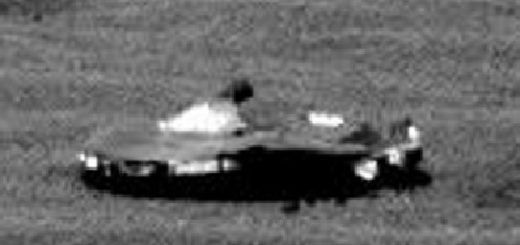Alien hunter retires after 35-year quest for E.T

Jodie Foster may have seen proof of alien lands in the 1997 Robert Zemeckis film “Contact,” but the real life astronomer the filmmakers based their sci-fi odyssey on didn’t find so much as a tentacle.
And after 35 years of fruitless hunting, director of SETI Research Jill Tarter is giving up the quest — but she’s not giving up hope. After all, life abounds in the strangest places
“We find it in boiling battery acid, at the bottom of the ocean where there’s huge pressure, there are microbes that make their living where the sun doesn’t shine — and they’re quite happy there,” Tarter said. And life out there would tell us a lot about back here.
“Think about it. If we detect a signal, we could learn about THEIR past (because of the time their signal took to reach us) and the possibility of OUR future,” Tarter said.
[pullquote]
Besides, the quest hasn’t been entirely in vain: In fact, the search for extraterrestrial intelligence has made tremendous leaps in the past few years, notably with the advent of the Kepler Space Telescope, which in recent months discovered two dozen alien planets and thousands of potential planets in the nearby skies.
“Prior to the Kepler mission, we knew of perhaps 500 exoplanets across the whole sky,” Doug Hudgins, Kepler program scientist at NASA headquarters in Washington, said in a statement. “Now, in just two years staring at a patch of sky not much bigger than your fist, Kepler has discovered more than 60 planets and more than 2,300 planet candidates.”
Each of those are great places to look for the telltale signs of little green men: biosignatures.
“Do a chemical assay, look and see whether that [planet’s] chemical signature is out of equilibrium — as it is here on Earth,” she told FoxNews.com. Thanks to the life teeming on our spinning blue orb, the planet’s ordinary biorhythm is slightly off-kilter.
“We have such a strong biological force function on the surface of the planet — from microbes and biological life — that it throws off the planet’s atmosphere,” she said.
Such an effect is something scientists should be able to perceive, even on a planet light-years away, although doing so will take a whole lot of technology that we may not even have yet.
“The universe looks more and more biofriendly. It’s looking more habitable. It’s exciting,” she told FoxNews.com.
And so the quest will go on — without Tarter.
After 35 years of searching the skies for signs of intelligence beyond Earth, Tarter is turning over the research reins to new leadership at the non-profit SETI Institute and assuming a new role: chief fundraiser.
“I want to make the endowment of SETI research a success, so that my colleagues now, and in the future, can focus on the search for extraterrestrial intelligence for all of us.”
Chief among the fundraising efforts is the upcoming SETIcon II, held June 22-24 at the Santa Clara Hyatt in California.
SETIcon is a unique event bringing together science and science fiction, artists and biologists, the curious and the content creators, to discuss the intersection of science, technology and imagination.
At the last such event, held August 13 – 15, 2010, more than 1,000 enthusiasts met astronauts and scientists to discuss the quest for life.
Hopefully the event will raise money for the SETI Institute, which Tarter said requires $2 million per year to run — a pittance for a program that could have such potential ramifications.
“It will impact everyone on the planet, so the whole planet should be supporting this.”
“Columbus didn’t wait for a 747 — he got across the Atlantic in a leaky wooden boat. The tools we have may be adequate to the job,” she said.



 Creators of mankind
Creators of mankind Description of “Tall white aliens”
Description of “Tall white aliens” Where they came from?
Where they came from? About hostile civilizations
About hostile civilizations The war for the Earth
The war for the Earth “Tall white aliens” about eternal life
“Tall white aliens” about eternal life Video: “Nordic aliens”
Video: “Nordic aliens” Aliens
Aliens Alien encounters
Alien encounters The aliens base
The aliens base UFO
UFO Technology UFO
Technology UFO Underground civilization
Underground civilization Ancient alien artifacts
Ancient alien artifacts Military and UFO
Military and UFO Mysteries and hypotheses
Mysteries and hypotheses Scientific facts
Scientific facts


















